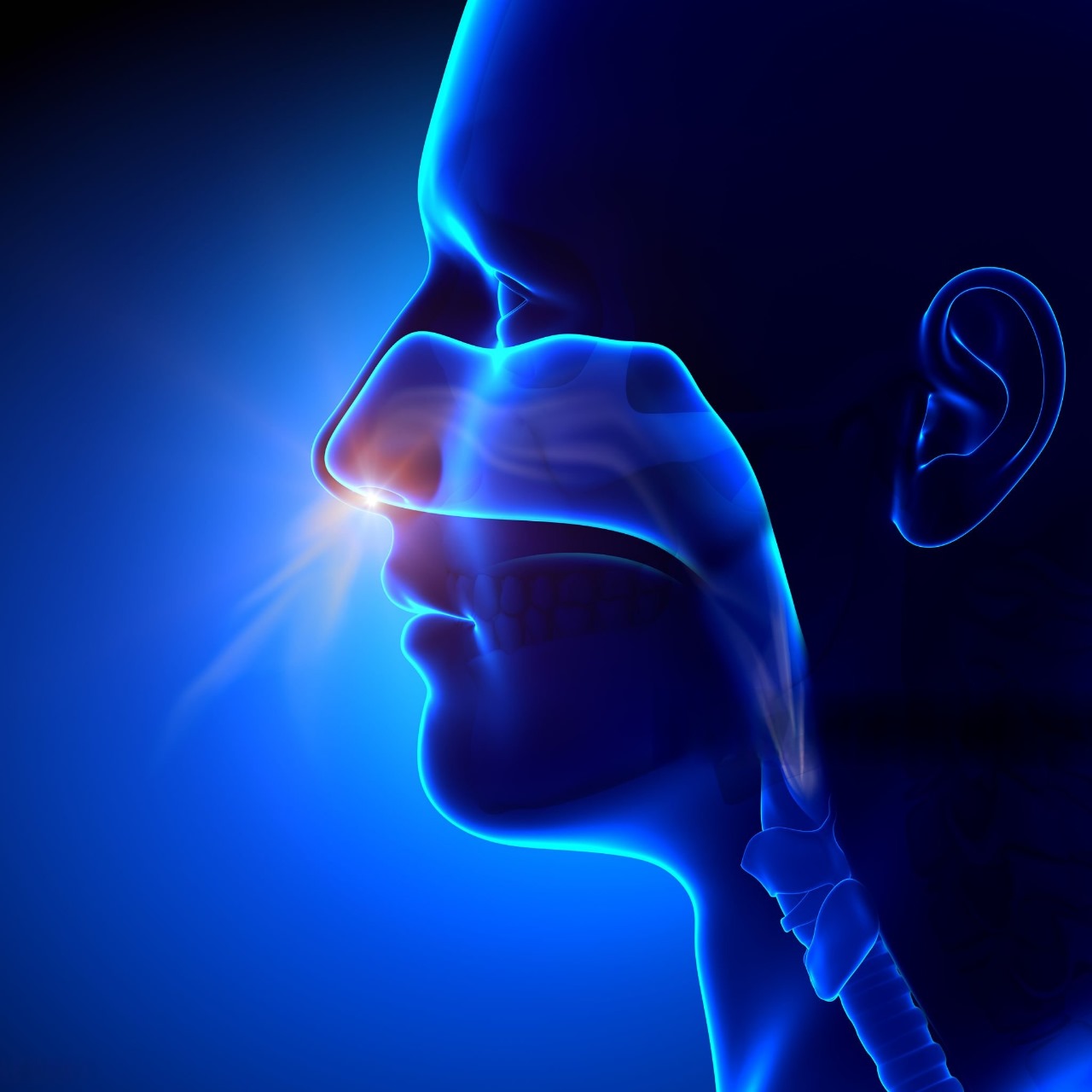Difficulty Breathing Through the Nose – Causes, Symptoms, Diagnosis, and Treatment
2025-10-14
Main Causes of Nasal Breathing Difficulties
-
Septum Deviation
The nasal septum — the inner wall dividing the nasal cavity — can become deviated to one side, often due to trauma. This causes narrowing of one or both nasal passages, making airflow difficult.
Deviated septum is very common and often goes unnoticed for years. -
Turbinate Hypertrophy
Turbinates are small structures inside the nose that filter and moisten the air. However, due to allergies, chronic inflammation, or hormonal changes, they may enlarge and block airflow. -
Allergic and Vasomotor Rhinitis
Allergies to dust, pollen, animal fur, or other allergens cause swelling of the nasal mucosa. Similar symptoms occur with vasomotor rhinitis, when nasal blood vessels overreact to temperature changes, stress, or humidity. -
Nasal Polyps
Soft growths inside the nasal cavity or sinuses — known as polyps — can cause complete nasal blockage. They grow slowly and often remain unnoticed until breathing becomes significantly difficult. -
Chronic Sinusitis
Long-term inflammation of the sinuses leads to persistent swelling, mucus buildup, and breathing difficulty. Additional symptoms may include headaches, a feeling of pressure in the forehead or face, and fatigue. -
Nasal Trauma or Congenital Anomalies
Fractures or deformities of the nasal bones can create mechanical obstruction and impair airflow.
Symptoms That Should Not Be Ignored
-
Constant or periodic nasal congestion
-
Mouth breathing, especially at night
-
Snoring and insomnia
-
Reduced sense of smell
-
Frequent headaches
-
Throat dryness or irritation
-
Chronic fatigue and oxygen deficiency
These symptoms often become part of a person’s routine, so they are ignored — but this is precisely when professional evaluation is most important.
Diagnosis – Identifying the Exact Cause
Modern medicine allows for detailed, painless assessment of the nasal cavity.
Endoscopic diagnosis is considered the “gold standard.” Using a special camera, the doctor can clearly visualize the nasal structures, turbinates, polyps, and septum condition.
The examination is completely painless and takes only a few minutes.
In some cases, CT (computed tomography) is performed to assess the sinuses and plan surgery if necessary.
Treatment
Treatment is always individualized and depends on the underlying cause.
Conservative Treatment
If the problem is due to allergies or mild inflammation, medical therapy is used:
-
Antiallergic medications
-
Decongestant nasal sprays
-
Nasal steroid sprays
-
Saline rinses for nasal cleansing
Surgical Treatment
When medication is not enough, endoscopic surgical methods are used — safe, precise, and effective.
Endoscopic Septoplasty
A minimally invasive surgery to correct the deviated septum. It is performed using an endoscope, without external incisions, minimal bleeding, and with rapid recovery.
Turbinoplasty
A procedure that reduces the size of the turbinates, restoring airflow and relieving congestion.
Endoscopic Polyp Removal
Polyps are completely removed, and the patient immediately experiences significant improvement in breathing.
Main Advantages of Endoscopic Methods
-
Precise visual control
-
Minimal tissue trauma
-
Little or no bleeding
-
Fast recovery
-
Painless and short hospital stay
Why Timely Treatment Matters
Chronic nasal obstruction causes oxygen deficiency, which affects the brain, cardiovascular, and nervous systems. Patients often feel tired, unfocused, and sleep-deprived.
In addition, chronic nasal problems can lead to middle ear infections, sinusitis, and even hearing loss.
Early diagnosis and treatment restore both health and overall quality of life.
Modern Endoscopic Treatment at Khozrevanidze Clinic
At Khozrevanidze Clinic, diagnosis and treatment of nasal breathing difficulties are performed using the latest endoscopic technologies.
Our ENT specialists apply minimally invasive methods, ensuring:
-
Painless procedures
-
Fast recovery
-
Restoration of natural breathing in the shortest time
Each patient undergoes complete diagnostic evaluation — endoscopic examination and, if necessary, CT scan, followed by personalized treatment.
If you experience nasal congestion, snoring, fatigue, or allergy symptoms — don’t postpone your visit.
Timely consultation ensures easier breathing and better quality of life.